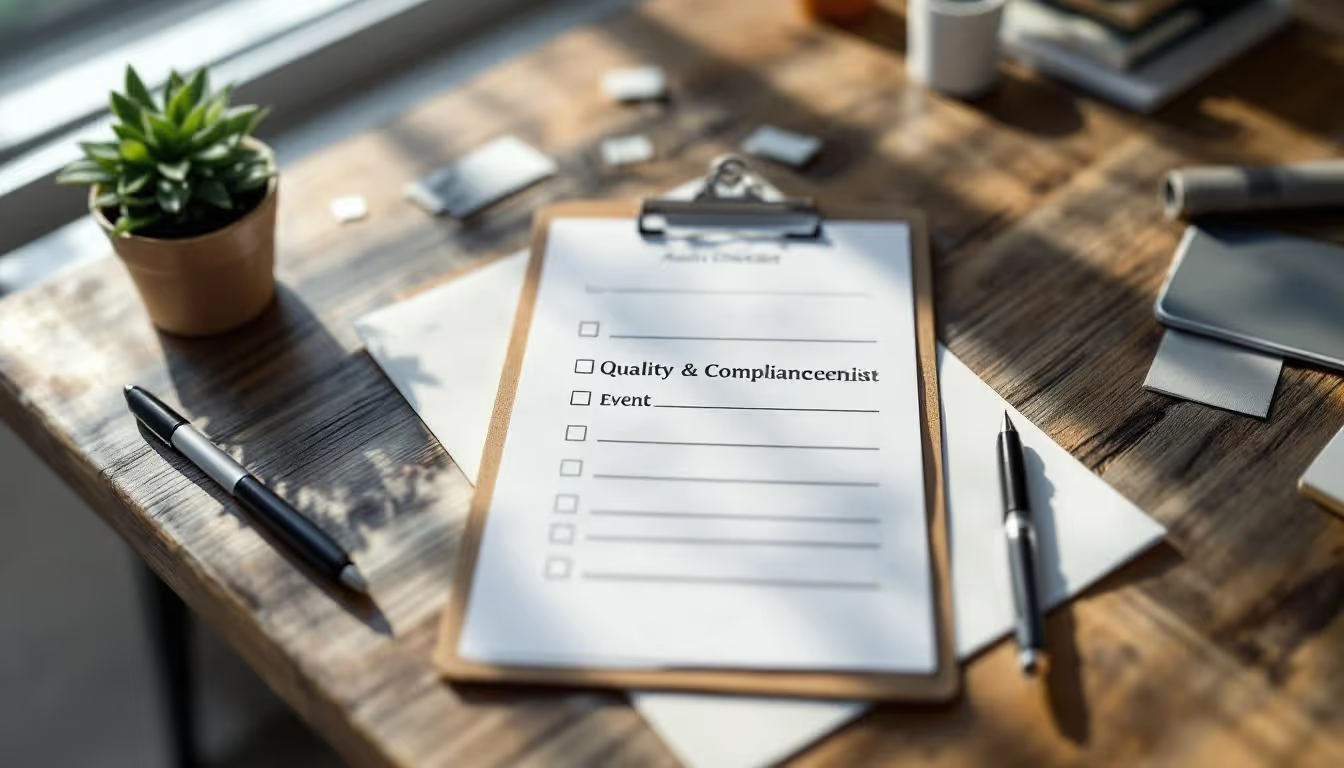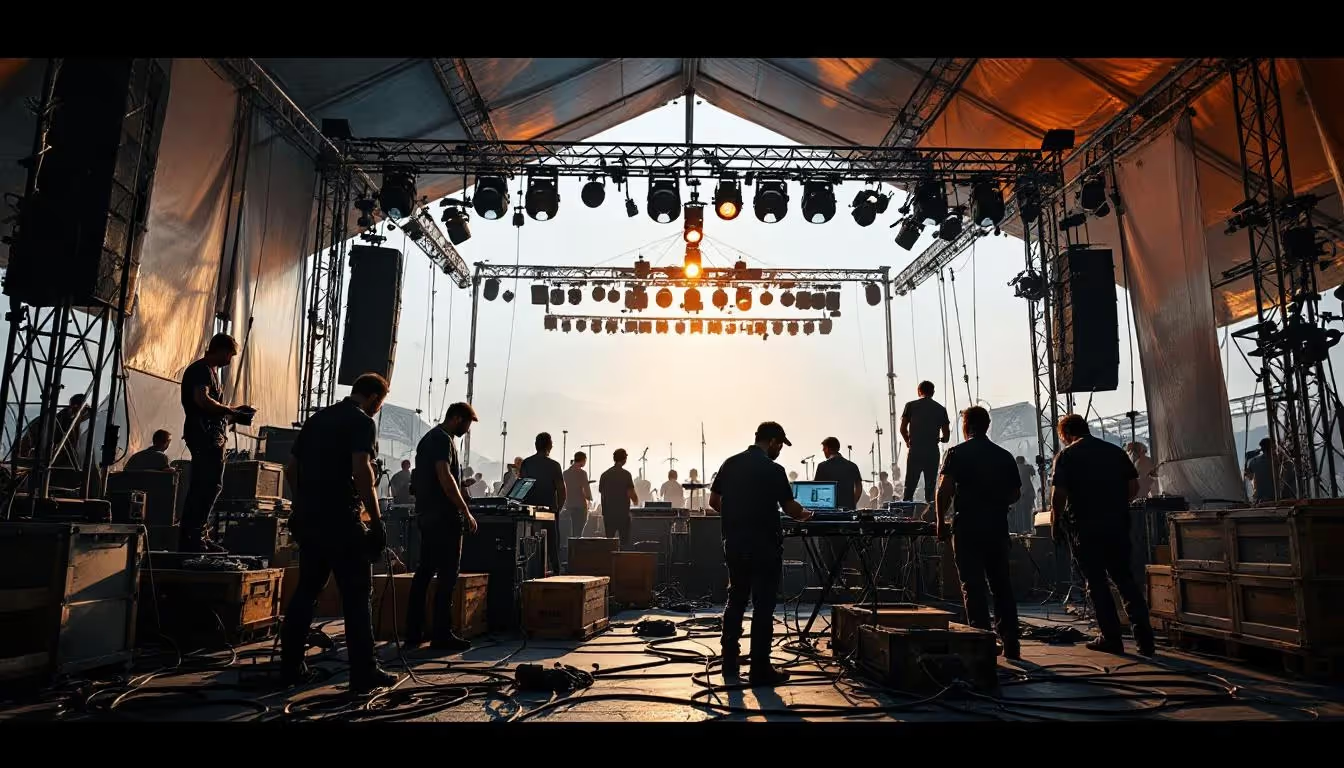Corporate event specifications: template and methodology
Organizing a corporate event can seem a daunting task, but with the right preparation, it becomes much more manageable. One of the key tools inevent organization is the specifications document. This document serves as a guide throughout the process, detailing essential aspects such as project objectives, budget estimates and technical constraints.
What are specifications?
A specification is a document that precisely describes the needs and expectations of a project. In the context of a corporate event, it details all the specifics: from the description of the event to the smallest logistical details. This document serves as a reference for all parties involved, ensuring that everyone is working towards a common goal.
It requires a clear understanding of the project's objectives. What do we want to achieve? What kind of experience do we want to offer participants? Answering these questions helps us to structure our events effectively.
The importance of project objectives
Establishing project objectives is essential right from the design stage. These objectives must be SMART (Specific, Measurable, Achievable, Realistic and Time-bound) in order to guide all aspects of theevent organization. For example, increasing brand awareness or facilitating team bonding could be among your objectives.
Once the objectives have been defined, they will guide all subsequent decisions. They influence not only the content of the event, but also its scope and target audience. This stage is the foundation on which all future planning and logistics are based. For more tips and feedback on event planning, please visit our blog.
Estimated budget and technical constraints
The budget forecast is another crucial component of the specification. Knowing your budget limits allows you to optimize the allocation of resources. This includes direct costs such as venue hire, transport and food, as well as any unforeseen costs that may arise.
At the same time, technical constraints such as audiovisual requirements or safety standards are also integrated into the document. These ensure that the event runs smoothly without any major technical hitches, guaranteeing a seamless experience for participants.
Sample budget
Steps in drawing up specifications
To write an effective specification, it's important to follow a few strict steps. Start with a general description of the event. Who are you as a company, and what message do you want to convey? From there, work out the specific details.
- Event description: Briefly introduce the purpose and theme of your event.
- Objectives: Define exactly what you want to achieve with this event.
- Target audience: Clearly identify who should participate and why.
- Planning and logistics: Set out key elements such as dates, potential locations and logistics required.
- Project monitoring: Set up indicators to measure the success of each project phase.
These points will help give a clear direction to external service providers, reinforcing the likelihood of a final result in line with your expectations.
Detailed planning and logistics
Planning and logistics are a fundamental part of the specification. They describe the "how" of day-to-day operations during the event, as well as the means to achieve them efficiently. Thinking through details such as the number of chairs required or the deployment of hostesses goes a long way to ensuring smooth execution.
And don't forget your back-up solutions. For example, what if the weather decides to turn up unexpectedly? Anticipating these scenarios through careful planning limits the risk of unforeseen events on the big day.
Planning template and example
Having access to a reliable planning template and example ensures that nothing is overlooked. Here are a few typical elements included:
- Date and time of each major activity
- List of dedicated human resources
- Installation and dismantling details
- Equipment logistics and transport
Project monitoring to guarantee success
Project monitoring consists of ensuring that the actual progress of the organization complies with the established specifications. This involves regular meetings, checkpoints with your team and, if necessary, major corrective action.
By setting up specific KPIs (key performance indicators), you can objectively measure progress towards your initial objectives. The data collected enables you to constantly adjust your methods, optimizing progress and drawing the necessary lessons for your next similar initiatives.
Questions for follow-up
Consider these aspects during your regular project reviews:
- What are the major deviations from what was planned?
- How can we quickly rectify these discrepancies?
- Are all stakeholders satisfied with the evolution?
- Are budgetary or logistical adjustments required?
Asking these precise questions helps you retain total control of your event, ensuring that it meets or exceeds the expectations set out in the specifications.
Finalizing specifications: review and validation
After you've completed each section, make sure that a thorough proofreading takes place. Ask various departments in your organization to validate their respective segments - marketing for promotional messages, financial for budget, and so on.
This collaborative process is designed to avoid any critical omissions before final transmission to external service providers or partners. A unanimously approved version solidifies your work base.




